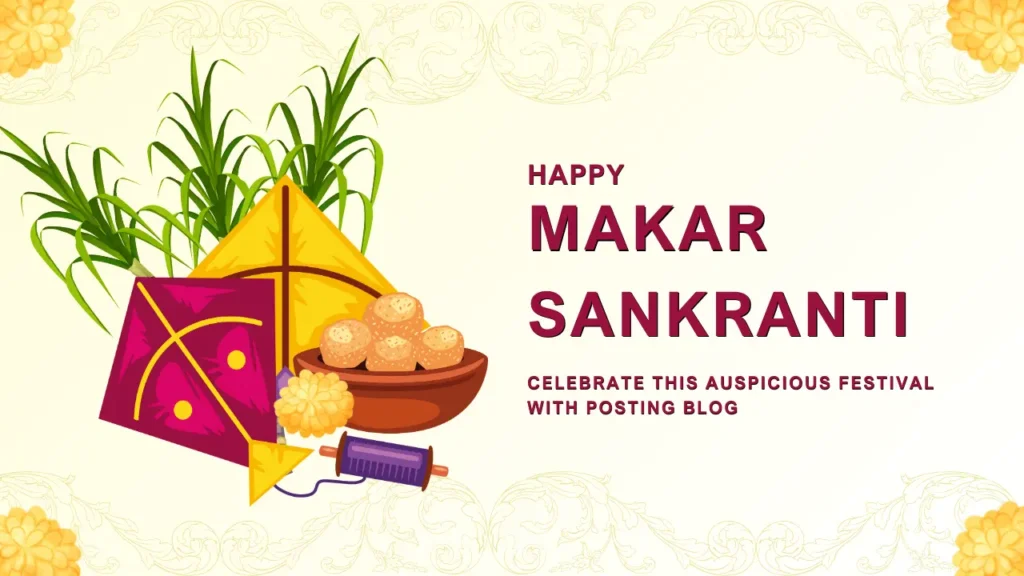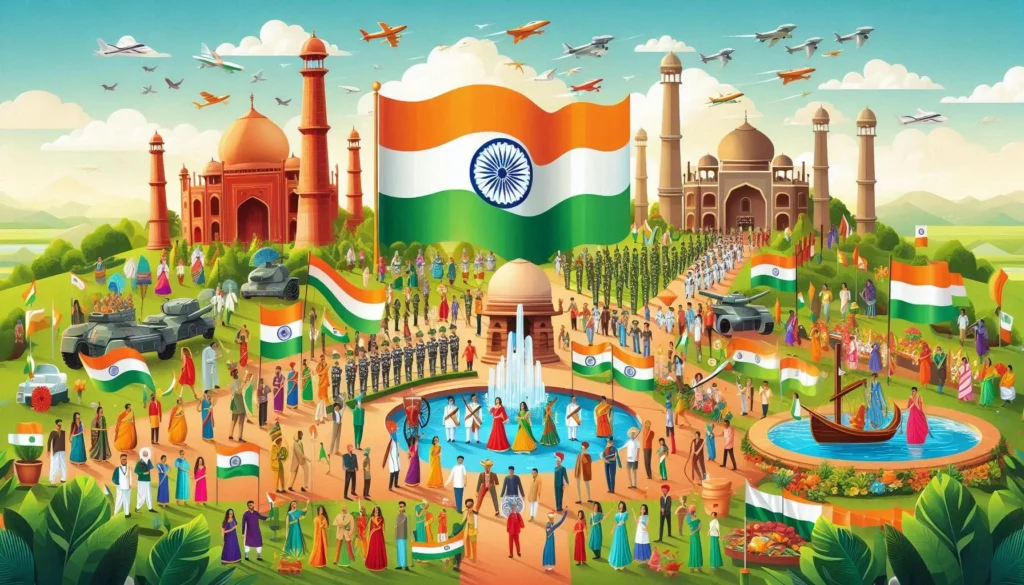Makar Sankranti is one of India’s most cherished festivals, celebrated with zeal across the country. It signifies the transition of the Sun into the zodiac sign of Capricorn (Makara), marking the beginning of longer days and warmer weather. This auspicious occasion, steeped in tradition, is observed as a harvest festival and a time of gratitude for nature’s bounty.
From kite-flying to the exchange of sweets, Makar Sankranti unites people of different regions under a common spirit of joy and togetherness. Discover the rich history, cultural importance, and colorful traditions that make this festival truly special.
The Ancient Roots of Makar Sankranti
The festival of Makar Sankranti has deep historical and cultural roots in India. It is mentioned in ancient scriptures, including the Mahabharata and Puranas. The term “Makar Sankranti” comes from the Sanskrit words “Makara” (Capricorn) and “Sankranti” (transition), symbolizing the Sun’s shift into Capricorn. This celestial event is considered highly significant in Hindu mythology and astronomy.
According to legends, Makar Sankranti marks the day when Surya, the Sun God, visits his son Shani, signifying a bond of harmony and unity. It also heralds the Uttarayan period, a six-month phase that is believed to be spiritually favorable for important rituals and ceremonies.
Why Makar Sankranti is Celebrated
Makar Sankranti is celebrated for various reasons, blending cultural, agricultural, and spiritual elements. Its significance lies in:
- Thanking Nature: The festival coincides with the end of the winter harvest season. Farmers rejoice in the fruits of their labor, expressing gratitude for a successful harvest.
- Astronomical Event: Scientifically, Makar Sankranti marks the Sun’s movement towards the northern hemisphere, bringing longer days and increased sunlight. This transition symbolizes hope and renewal.
- Spiritual Significance: Many people believe that taking a holy dip in rivers like the Ganges or Yamuna on this day purifies the soul. It is a time to perform charitable acts and offer prayers.
- Cultural Unity: Despite being celebrated under different names in various states, the essence of Makar Sankranti—gratitude, togetherness, and joy—remains the same across India.
Regional Festivities of Makar Sankranti
The festival takes on distinct forms in different parts of the country, showcasing India’s cultural diversity. Here’s how it is celebrated regionally:
1. Lohri in Punjab
In Punjab, the day preceding Makar Sankranti is known as Lohri. Bonfires are lit in fields and homes, accompanied by traditional folk dances like Bhangra and Gidda. Families gather to celebrate the harvest of sugarcane and share sweets made from jaggery and sesame.
2. Uttarayan in Gujarat
Gujarat celebrates Uttarayan with a sky filled with colorful kites. Kite-flying competitions are held, creating a festive atmosphere as families come together to participate. Traditional dishes like Undhiyu and Jalebi are also a significant part of the celebrations.
3. Pongal in Tamil Nadu
In Tamil Nadu, Makar Sankranti is known as Pongal, a four-day festival dedicated to nature and agriculture. The festival’s highlight is the preparation of “Pongal,” a delicious sweet dish made with rice, jaggery, and milk. Homes are adorned with intricate kolam designs, and cows are worshipped as symbols of prosperity.
4. Magh Bihu in Assam
In Assam, Magh Bihu is celebrated with feasting, traditional games, and community gatherings. People build “meji” huts, which are later burnt in a symbolic ritual. It is a time of camaraderie and gratitude.
5. Tilgul in Maharashtra
In Maharashtra, people exchange tilgul (sesame and jaggery sweets) and greet each other with the phrase “Tilgul ghya, goad goad bola” (Take tilgul and speak sweetly). This practice emphasizes harmony and goodwill among individuals.
Customs and Traditions of Makar Sankranti
Makar Sankranti is a festival rich in traditions and rituals that bring people together in celebration. Here are some of its key customs:
- Kite Flying: Flying kites is a major attraction of the festival. The activity is both a fun-filled pastime and a symbolic gesture of reaching for the skies and embracing freedom.
- Holy Baths: Devotees take ceremonial baths in sacred rivers, believing it cleanses their sins and brings blessings for the year ahead. Popular pilgrimage sites like Prayagraj and Haridwar see large gatherings on this day.
- Special Foods: Dishes made from sesame seeds and jaggery, such as laddoos and chikkis, are widely prepared. These foods are believed to provide warmth and energy during the winter season.
- Acts of Charity: The festival encourages acts of kindness, with people donating food, clothes, and money to the needy. Charity is seen as a way to honor the Sun God and spread positivity.
Sharing Happy Makar Sankranti Images and Wishes
In today’s digital world, sharing Happy Makar Sankranti Images and heartfelt messages has become a common way to celebrate the festival. These images often depict kites, traditional motifs, and vibrant gatherings, capturing the festive spirit.
Here are some heartfelt wishes you can share with your loved ones:
- Wishing you warmth, happiness, and prosperity this Makar Sankranti. May it fill your life with joy and abundance. Happy Makar Sankranti!”
- Embrace the harvest season and new beginnings with happiness and love. Wishing you a joyful Lohri and a Happy Makar Sankranti!
- “Let your kite of hope soar high as we welcome brighter days. Happy Makar Sankranti!”
Conclusion
Makar Sankranti is more than just a festival—it is a reminder of the harmony between humanity and nature. It inspires gratitude, promotes community bonding, and spreads joy. Whether you are flying kites, sharing sweets, or sending Happy Makar Sankranti Images, the festival’s essence lies in embracing positivity and togetherness.
As we celebrate this special occasion, let us cherish the warmth of the Sun, the richness of traditions, and the blessings of life. May this Makar Sankranti bring love, laughter, and prosperity to you and your loved ones. Wishing you a Happy Makar Sankranti from Posting Blog!



